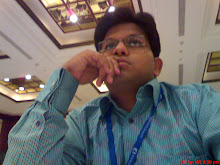1570
William Gilbert (1540-1603) demonstrates attractive and repulsive force from rubbing many substances together (electrostatic charge); calls them "electrics," and suggests the earth itself is a magnet.
1660s
Otto von Guericke (1602-86) constructs first friction machine to generate static charge, using a revolving ball of sulphur.
1729
Stephen Gray (1696-1736) conducts experiments that show electricity moves.
1740s
Benjamin Franklin (1706-90) proposes the notion of positive and negative charge, conserving a balance except when a deficit is brought about by some means. His famous kite experiments, identifying lightning as a form of electrical discharge, take place in 1752.
1745
Georg von Kleist (c.1700-48) and Pieter van Musschenbroek (1692-1761) invent the Leyden jar, the first condenser (capacitor).
1759
Franz Maria Aepinus (1724-1802) presents the first mathematical treatment of electrical forces and constructs first condenser with parallel plates.
1770s
Henry Cavendish (1731-1810) anticipates later work of Coulomb and Ohm, but shuns publication. The concepts of potential difference and a zero reference point, a ground, are his.
1785
Charles Augustin de Coulomb (1736-1806) works out reciprocal law of electrical force (varying inversely as the square of distance between two charges).
1791
Luigi Galvani (1737-98) demonstrates electrical activity in living tissue, as in muscle and nerve.
1800
Alessandro Volta (1745-1827) invents an electric battery, the first source of DC current.
1819
Hans Christian Oersted (1777-1851) finds that current in a wire can deflect a nearby magnetic needle.
1820
Andre Ampere (1775-1836) discovers that two wires carrying currents act as magnets to attract or repel each other; he describes the relation between current direction and magnetic field orientation.
1826
Georg Simon Ohm (1789-1854) mathematically unites current, voltage, and resistance in the famous "law" bearing his name: V=IR.
1829
Joseph Henry (1797-1878) constructs an electromagnet that can lift in excess of a ton. Demonstrates a telegraph in 1831. Independently he works out principles of magnetic induction at about the same time as Faraday, but publishes slightly later.
1831
Michael Faraday (1791-1867) experimentally characterizes magnetic induction. The most thorough of early electrical investigators, he formulates the quantitative laws of electolysis, the principles of electric motors and transformers, investigates diamagnetic materials, and posits a physical reality for the indirectly observed magnetic and electrical lines of force.
1833
Wilhelm Weber (1804-1891) and Karl Friedrich Gauss (177-1851) successfully operate a telegraph between two distant buildings. They devise the first system of consistent units for electrical measurement. Gauss organizes a European network of observers to record strength and direction of the geomagnetic field.
1834
Heinrich Lenz (1804-65) discovers, at about the same time as Henry and Faraday, that an induced current flows in a direction to oppose the change that induced it--Lenz's law.
1845
Gustav Robert Kirchhoff (1824-87) publishes "circuit rules" for calculating electrical quantities in loop and junction configurations--the sum of all potential drops is always zero.
1851
Heinrich Ruhmkorff (1803-77) invents doubly-wound induction coil; some models produce arcs a foot or more in length. This leads to development of AC transformers.
1864
James Clerk Maxwell (1831-79) describes electromagnetic field in four classic equations, which allow also calculation of the speed of light. Their solution predicts waves within the field.
1869
William Crookes (1832-1914) and Johann Wilhelm Hittorf (1824-1914) independently discover "cathode rays," working with currents in glass tubes of improved vacuum quality.
1888
Heinrich Hertz (1857-94) discovers and measures the waves, radio waves, predicted by Faraday and Maxwell.
1888
Nikola Tesla (1867-1943) invents the first practicable AC motor and polyphase power transmission system, which revolutionizes industry and commerce.
1900s
Charles Proteus Steinmetz (1865-1923) contributes mathematical analysis of more complex nature of AC circuits.
Wednesday, September 24, 2008
Subscribe to:
Post Comments (Atom)

No comments:
Post a Comment